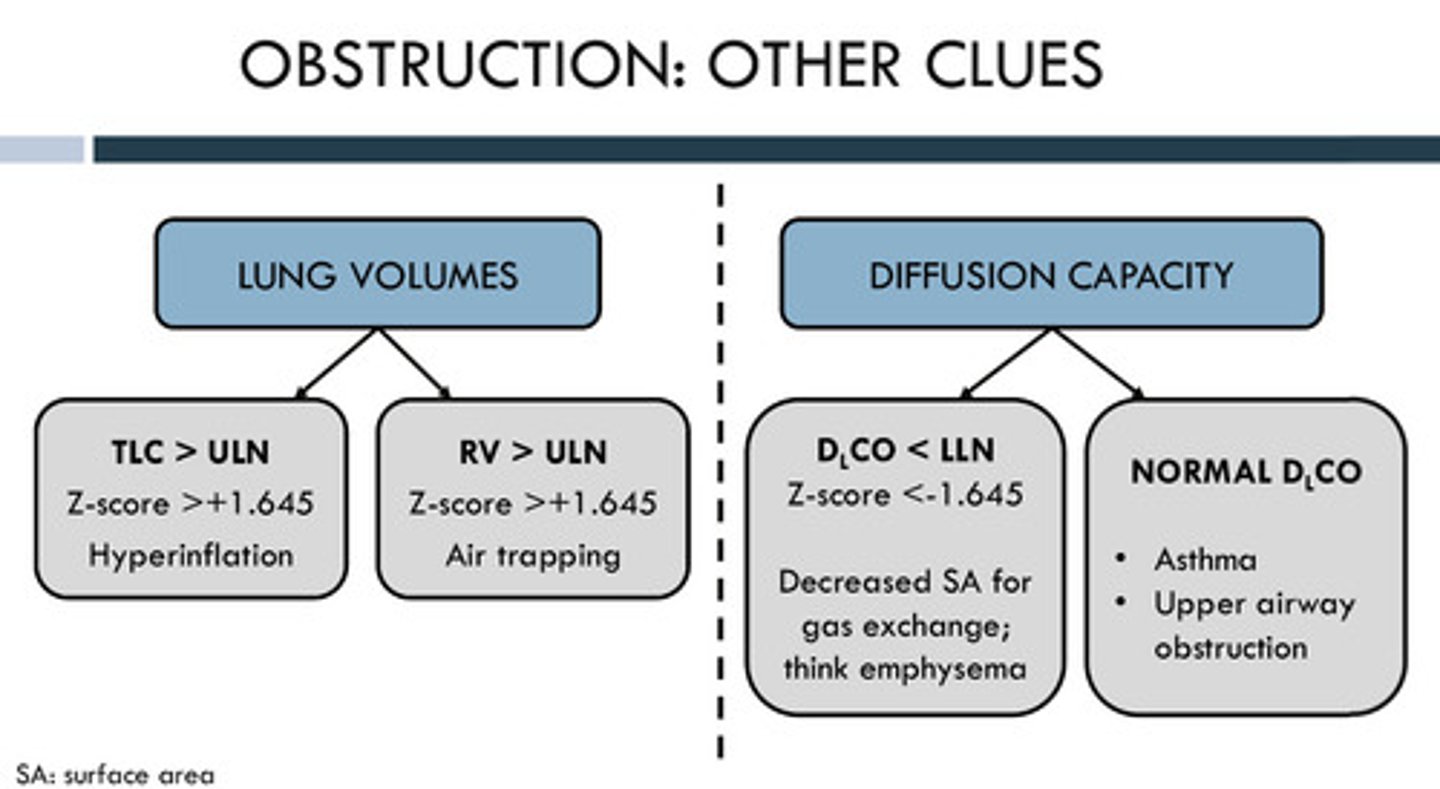Pulmonary Function Testing
1/21
There's no tags or description
Looks like no tags are added yet.
Name | Mastery | Learn | Test | Matching | Spaced |
|---|
No study sessions yet.
22 Terms
what is spirometry?
A test that measures the volumes of air inspired and expired, and subsequent changes in lung volume. It is used to evaluate lung function and diagnose lung conditions or other respiratory disorders (the respiratory therapist essentially tells you to breathe in different rates, styles, etc)
what is a spirogram and describe all the volumes/capacities labels
it is the result graph from the spirometry test!
A: functional residual capacity (FRC)
B: tidal volume
C: total lung capacity (TLC)
D: forced vital capacity (FVC)
E: residual volume (RV)
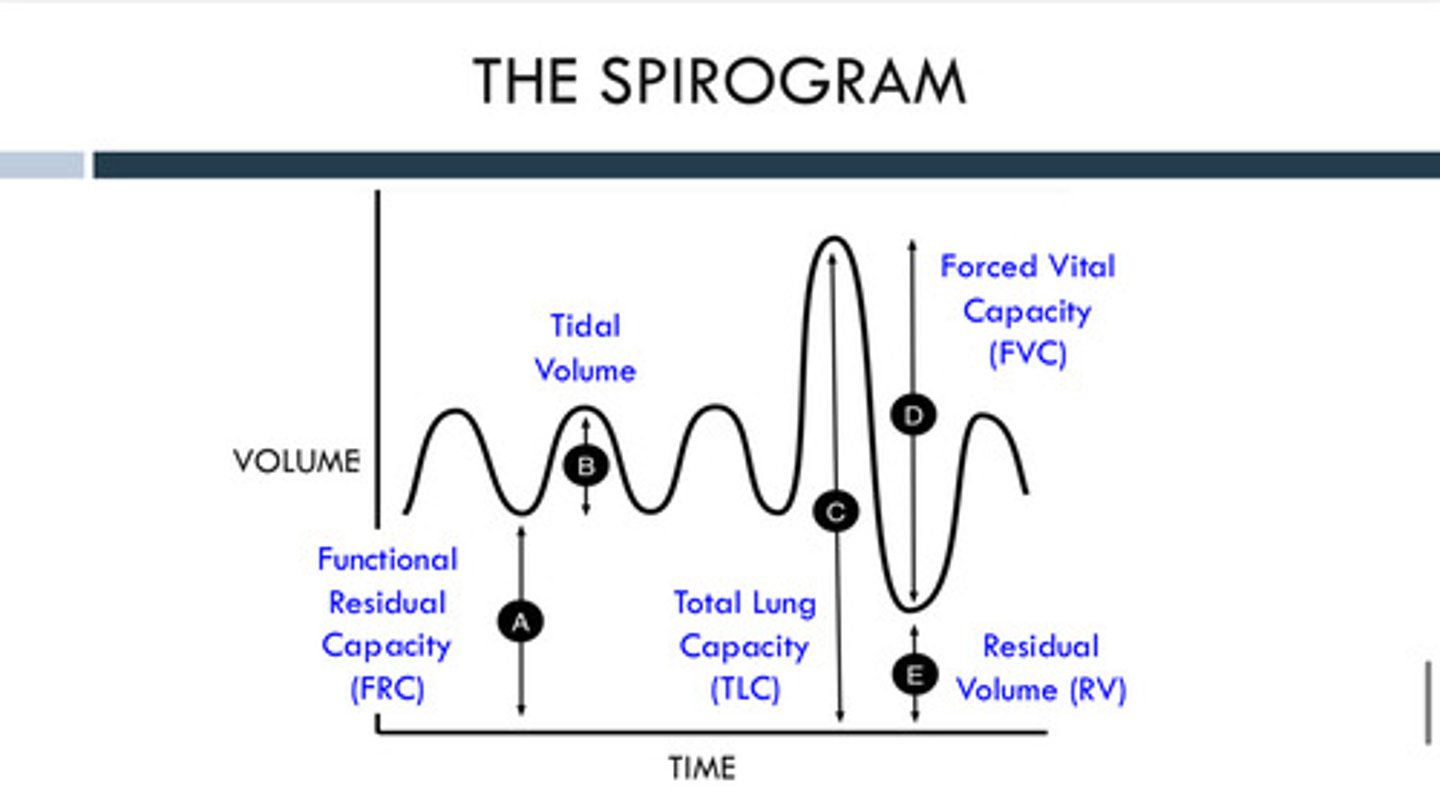
what is FEV1?
Forced expiratory volume in the first second (most of our air comes out in this first second)
what is FEV1/FVC
the proportion of your total exhaled air (FVC) that you can blow out in the first second (FEV1)
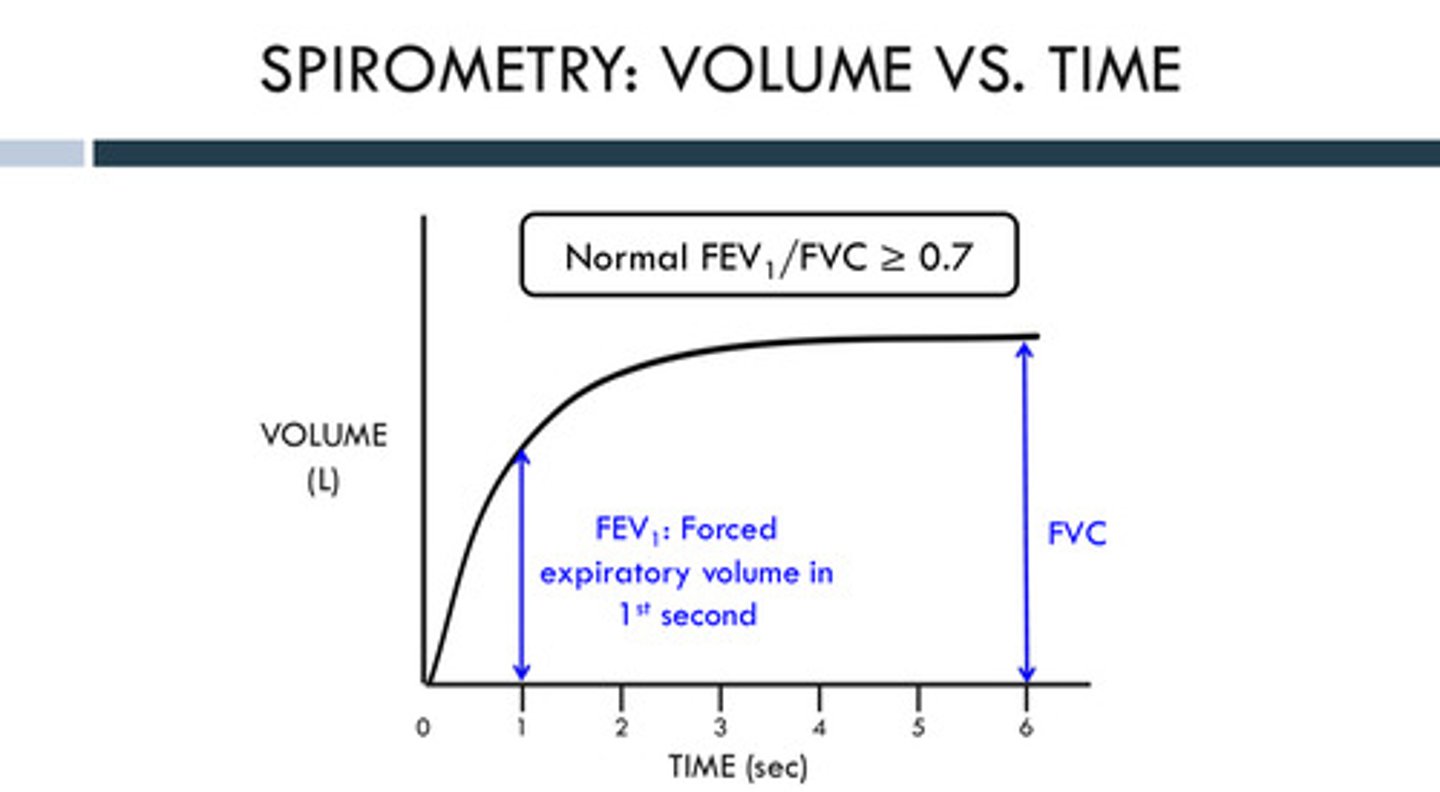
what is the normal value we should expect for FEV1/FVC
>/= to 0.7 (70-80%)
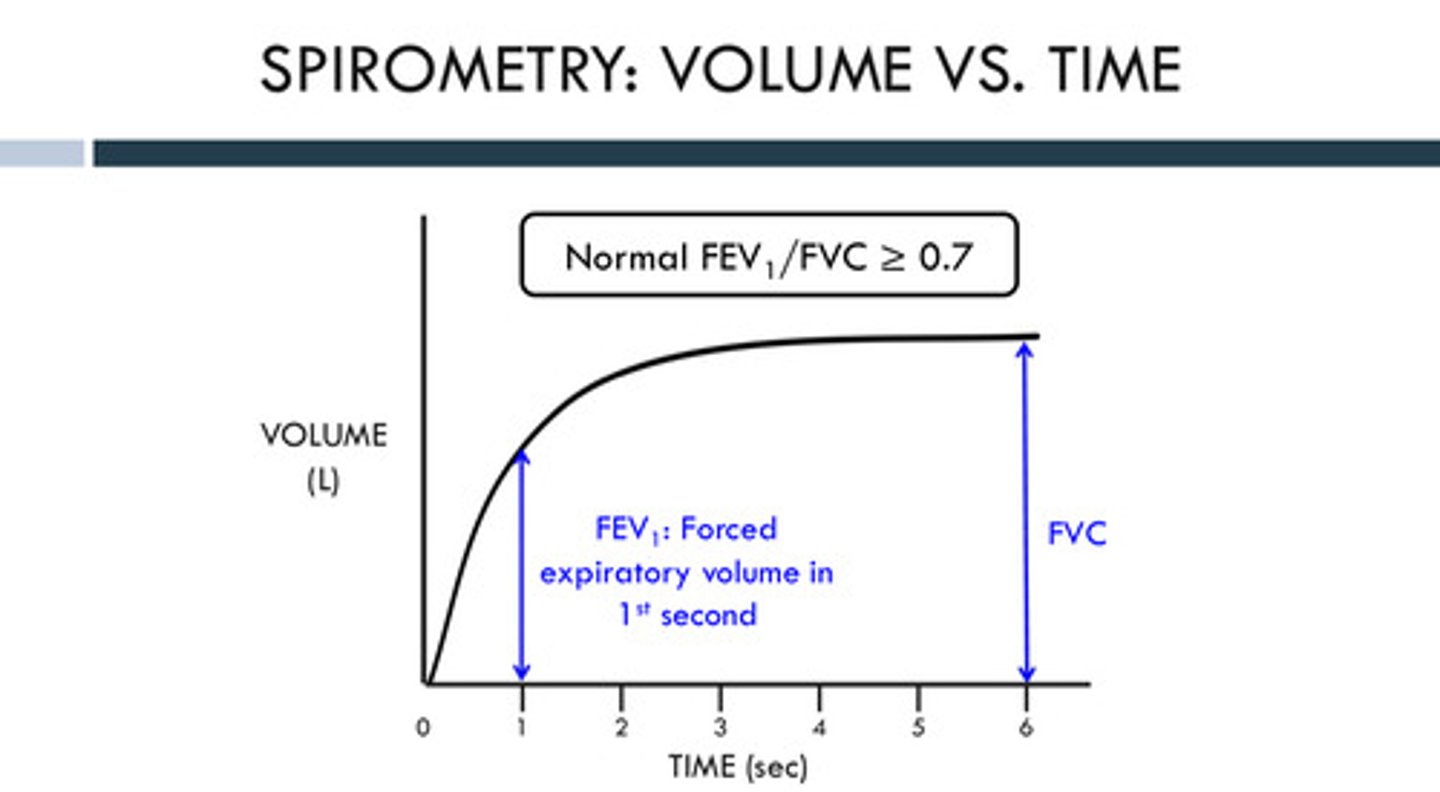
the shape of the top half of the flow volume loop can indicate what?
that there is an obstruction or restriction in the lungs
describe the flow volume loop in terms of exhalation and inhalation
exhalation is the top half of the loop; it starts at full inhalation (left most point on x axis) —> the curve rises quickly to a peak which is the peak expiratory flow, then it slopes down as the lungs empty.
inhalation is the bottom half of the loop; it starts at the end of exhalation (right most point on x-axis) and curves back to the starting point as you inhale fully

what does the width of the flow volume loop demonstrate
the vital capacity
what is the flow volume loop
Another way of looking at lung capacity in different breathing instructions. this loop shows the speed of air flow during inhalation and exhalation. the flow is the y-axis, and the volume is the x-axis.
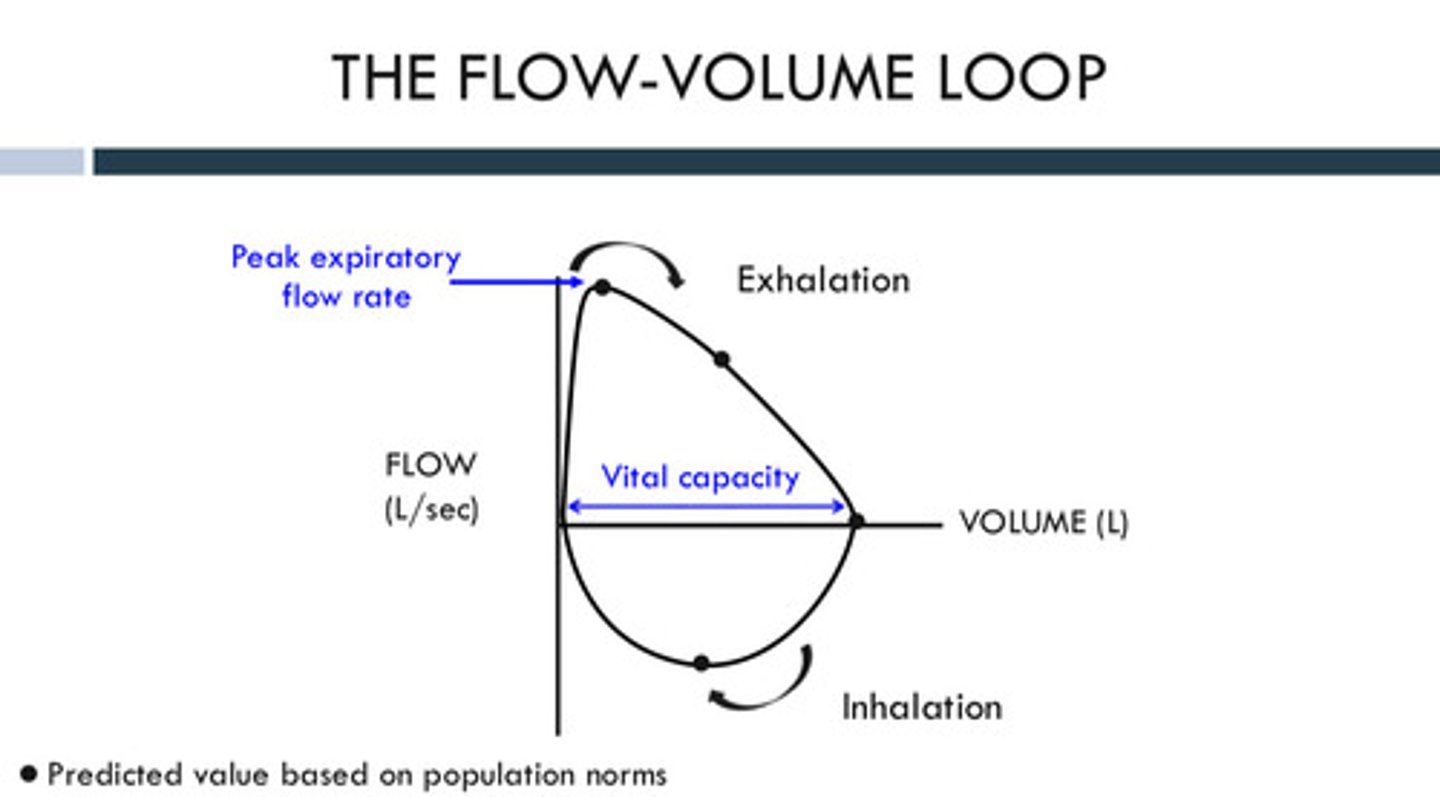
what is the shape of the flow volume loop with obstruction? why?
A scooped out shape or a concave exhalation curve due to a lower peak expiratory flow rate and narrowed or blocked airways. It make it harder to push air out quickly, especially during the middle and later parts of exhalation
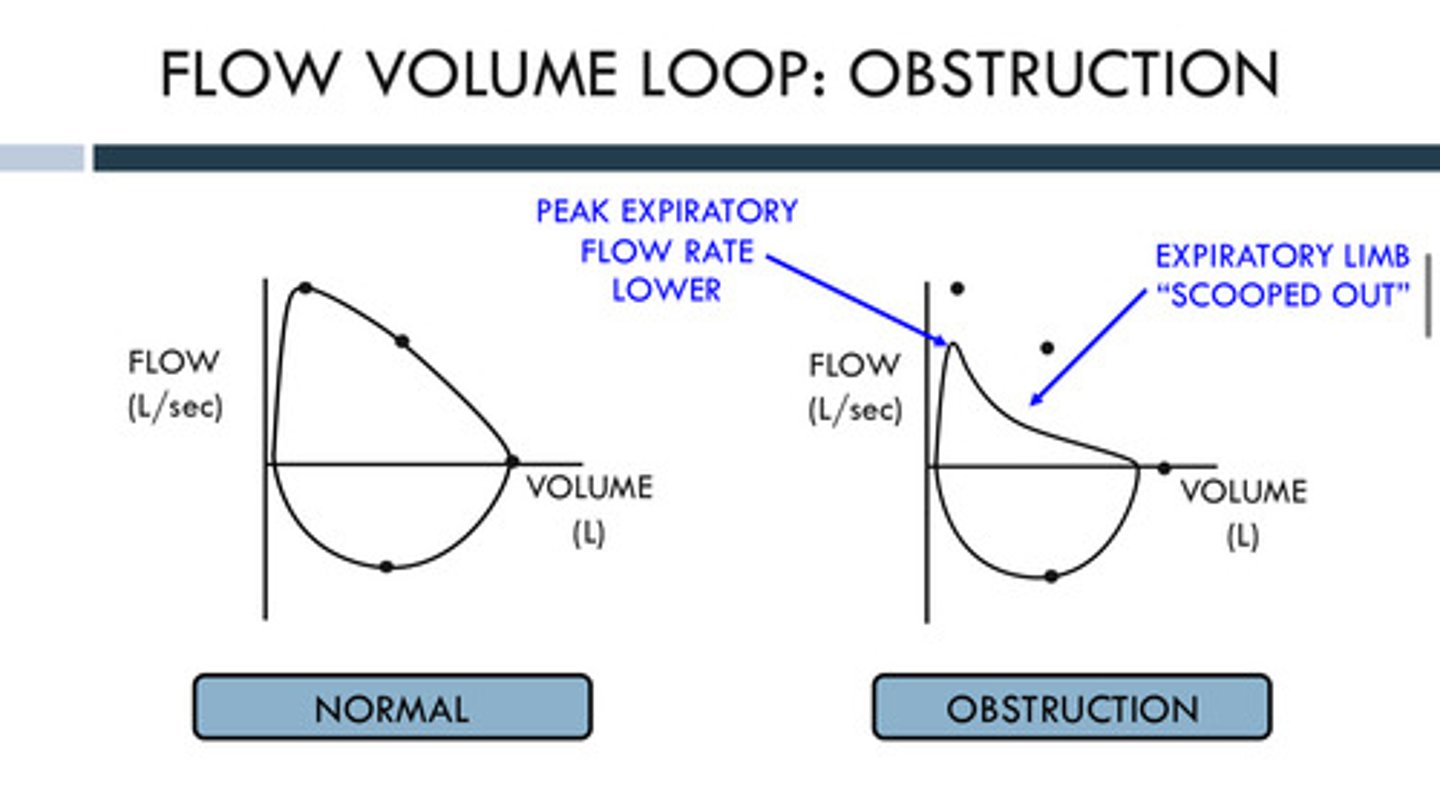
What spirometry value do we look at to evaluate for pulmonary obstruction? What does this value mean in words?
we look at the FEV1/FVC value: an obstruction will show a FEV1/FVC value that is less than the lower limit of normal. this value means that patients with obstruction to airflow will get less air out in the first one second (FEV1) of exhalation
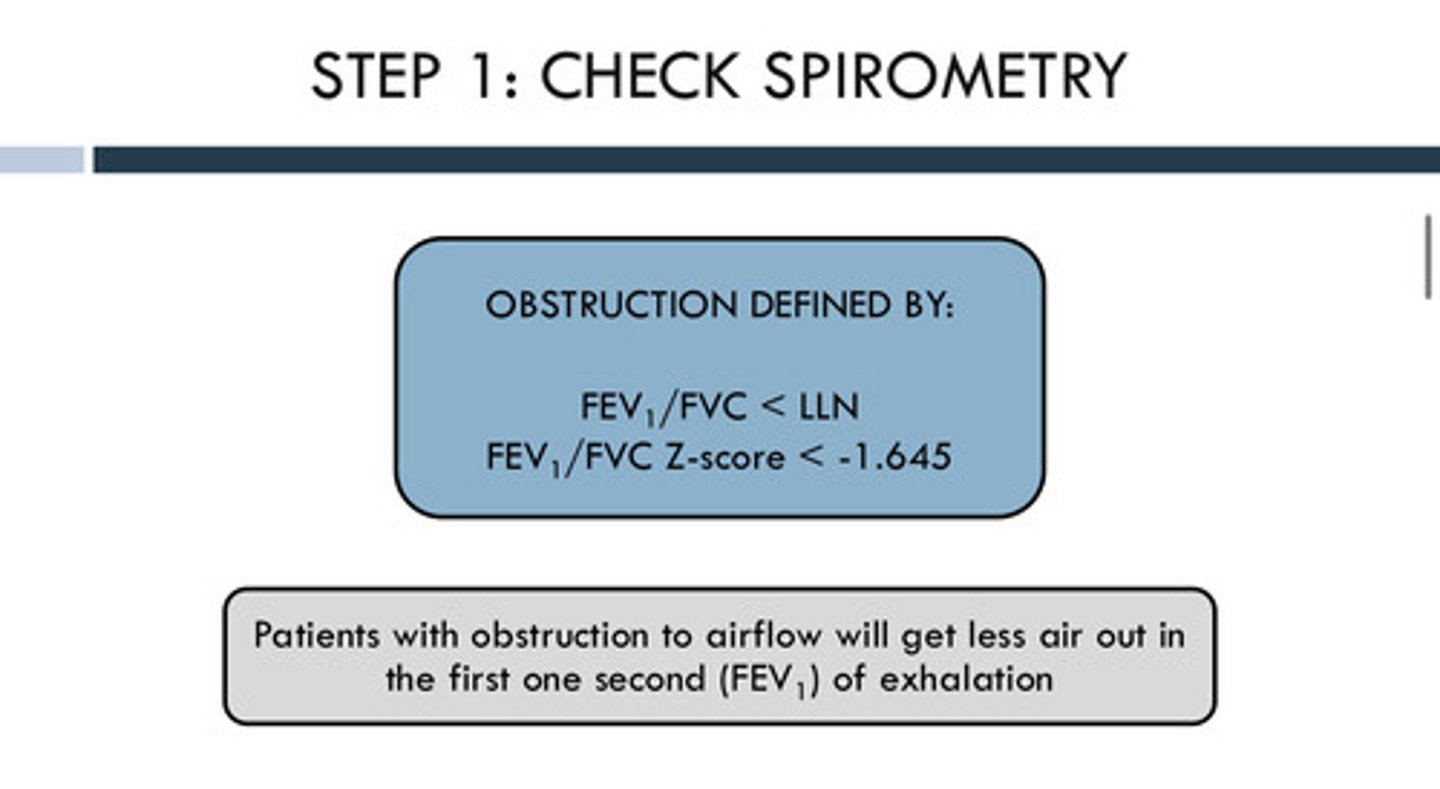
what abnormal value of FEV1/FVC defines that the patient has obstruction?
obstruction can be defined by a FEV1/FVC z-score value less than -1.645
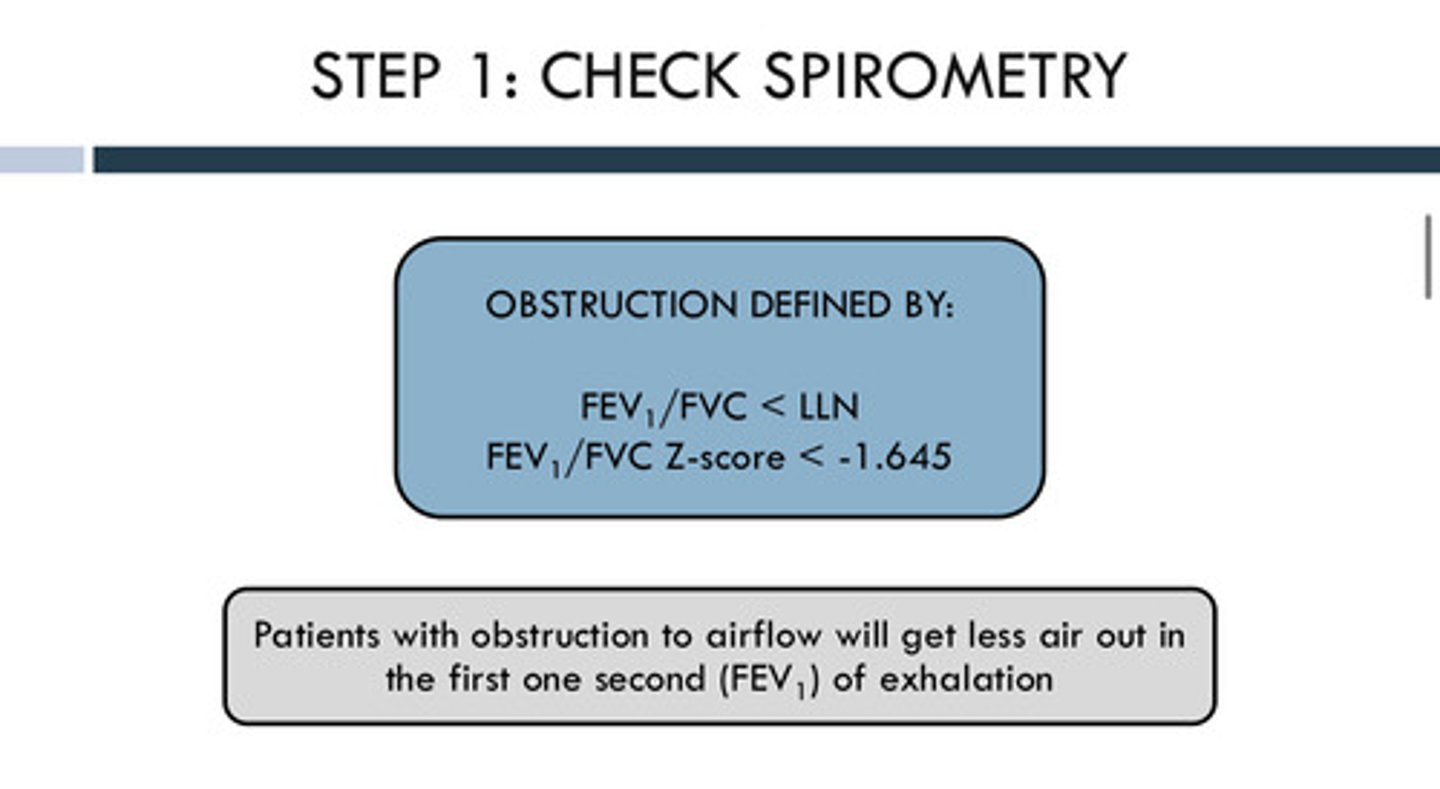
what is z-score
number of standard deviations away from the mean
what spirometry values do we look at to evaluate for pulmonary restriction?
TLC (total lung capacity) value; restriction is defined by TLC < LLN (lower limit of normal) so we could expect restriction to be defined by a TLC z-score value less than -1.645
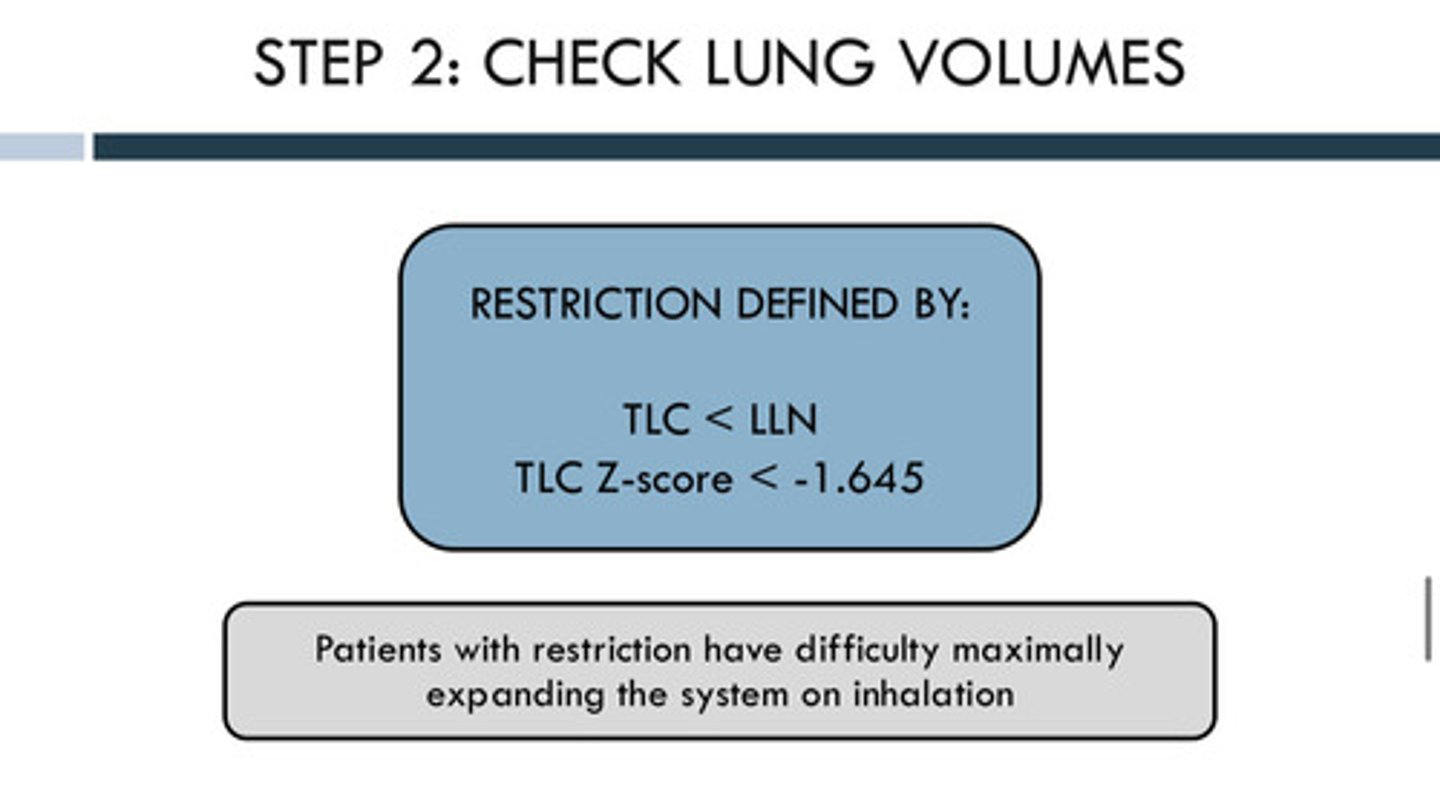
what do the TLC < LLN value mean in words? how does the flow volume loop look in patients with restriction?
patients with restriction have difficulty maximally expanding the system on inhalation, meaning their vital capacity is smaller as well. the flow-volume loop will be narrowed due to reduced total volume of air and reduced flow rate.
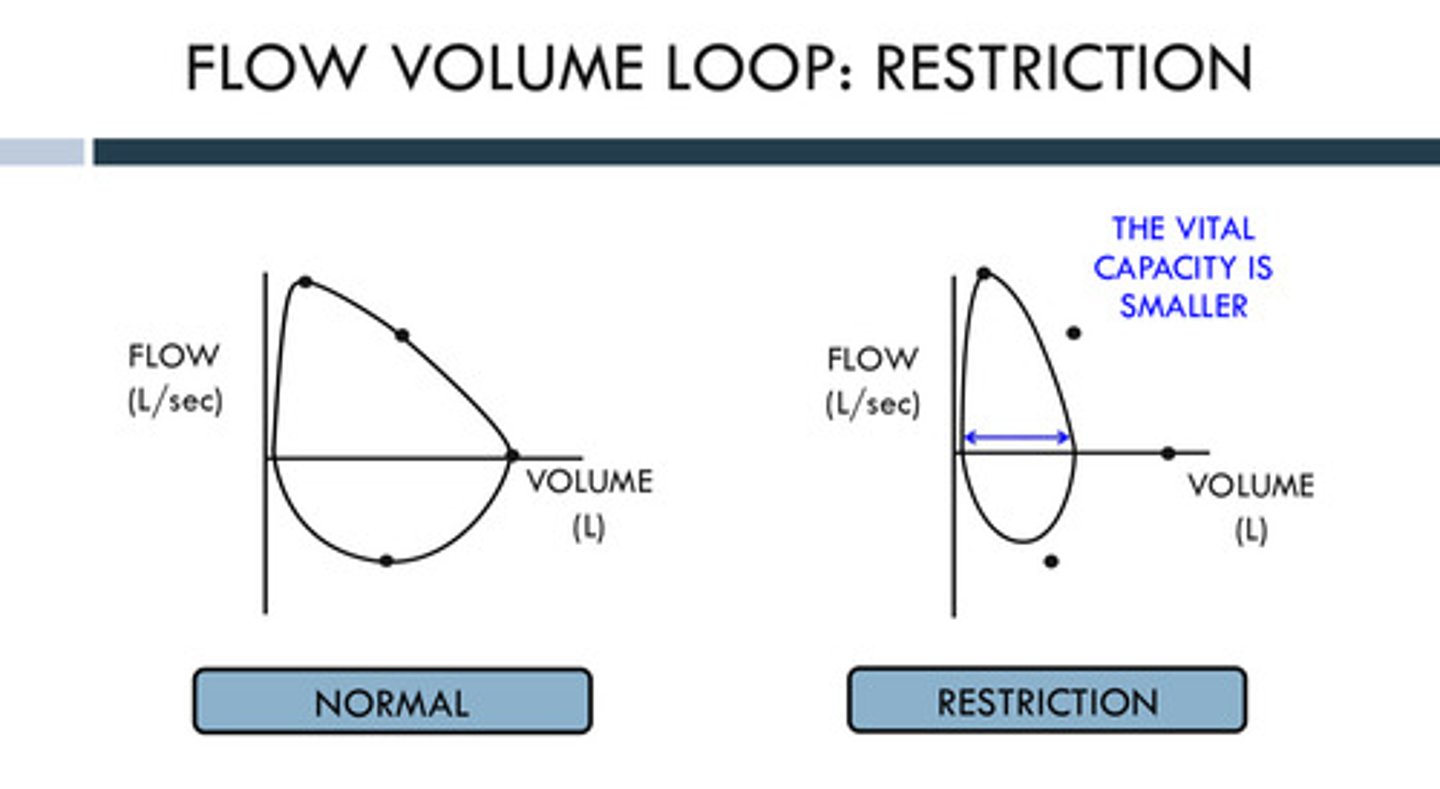
what are the main differences between pulmonary obstruction and pulmonary restriction?
obstruction = normal volume but slow emptying; restriction = reduced volume and flow
what is hyperinflation of the lungs? what might it be caused by?
there is too much air trapped in the lungs, causing them to stay abnormally expanded. this is different from air trapping as it is a more advanced or a more persistent expansion of the lungs due to CHRONIC air trapping; this may be caused by ongoing air trapping plus loss of lung recoil (ex: emphysema) such as in severe or long standing obstructive diseases
what spirometry value would we look at for hyperinflation?
TLC > upper limit of normal (ULN): TLC z-score greater than +1.645
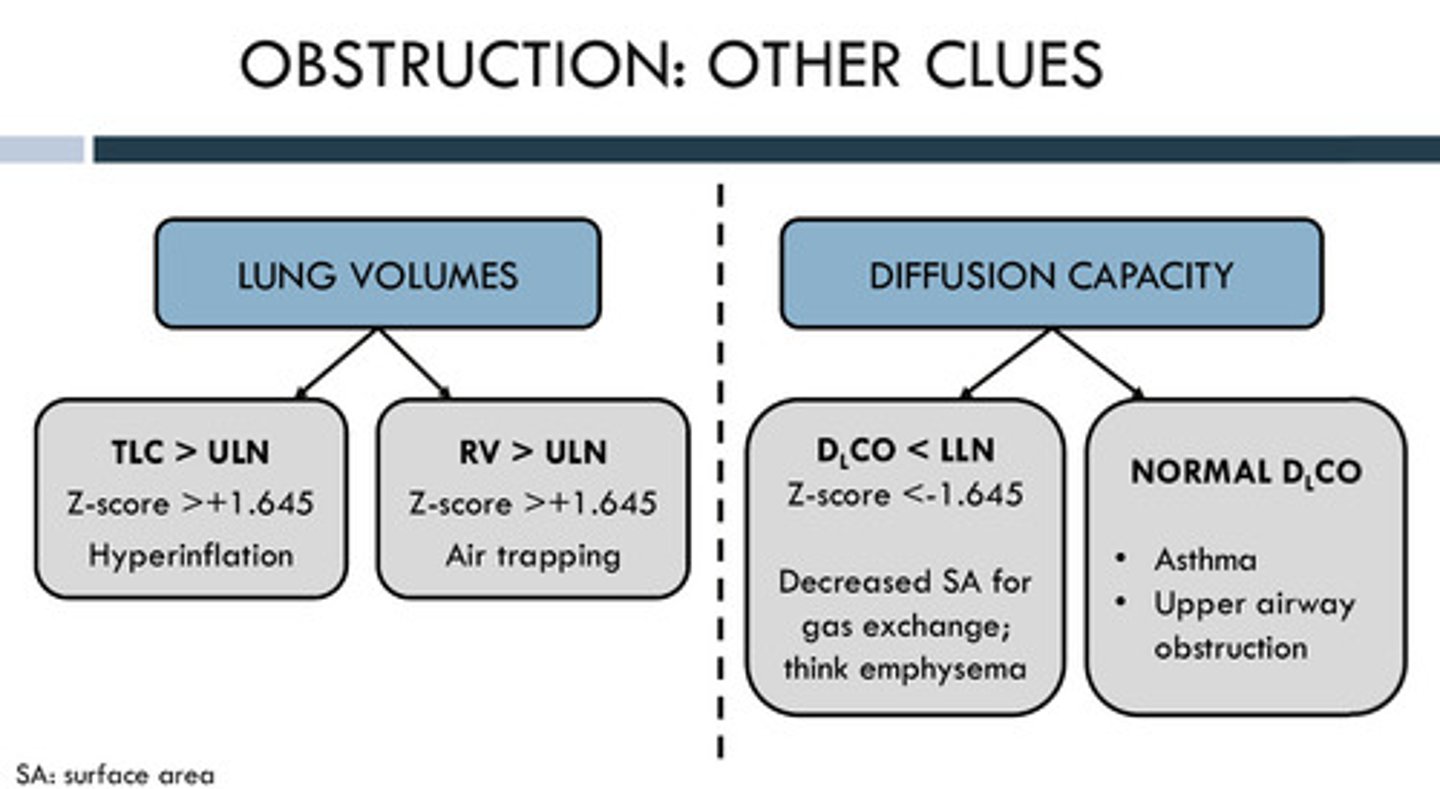
what is air trapping? what might it be caused by?
May be caused by incomplete emptying of the lungs during exhalation —> some air stays behind. this may be caused by narrowed or collapsing airways such as in early stage obstructive lung diseases
what spirometry value would we look at for air trapping?
RV (residual volume) > ULN (upper limit of normal): RV z-score greater than +1.645
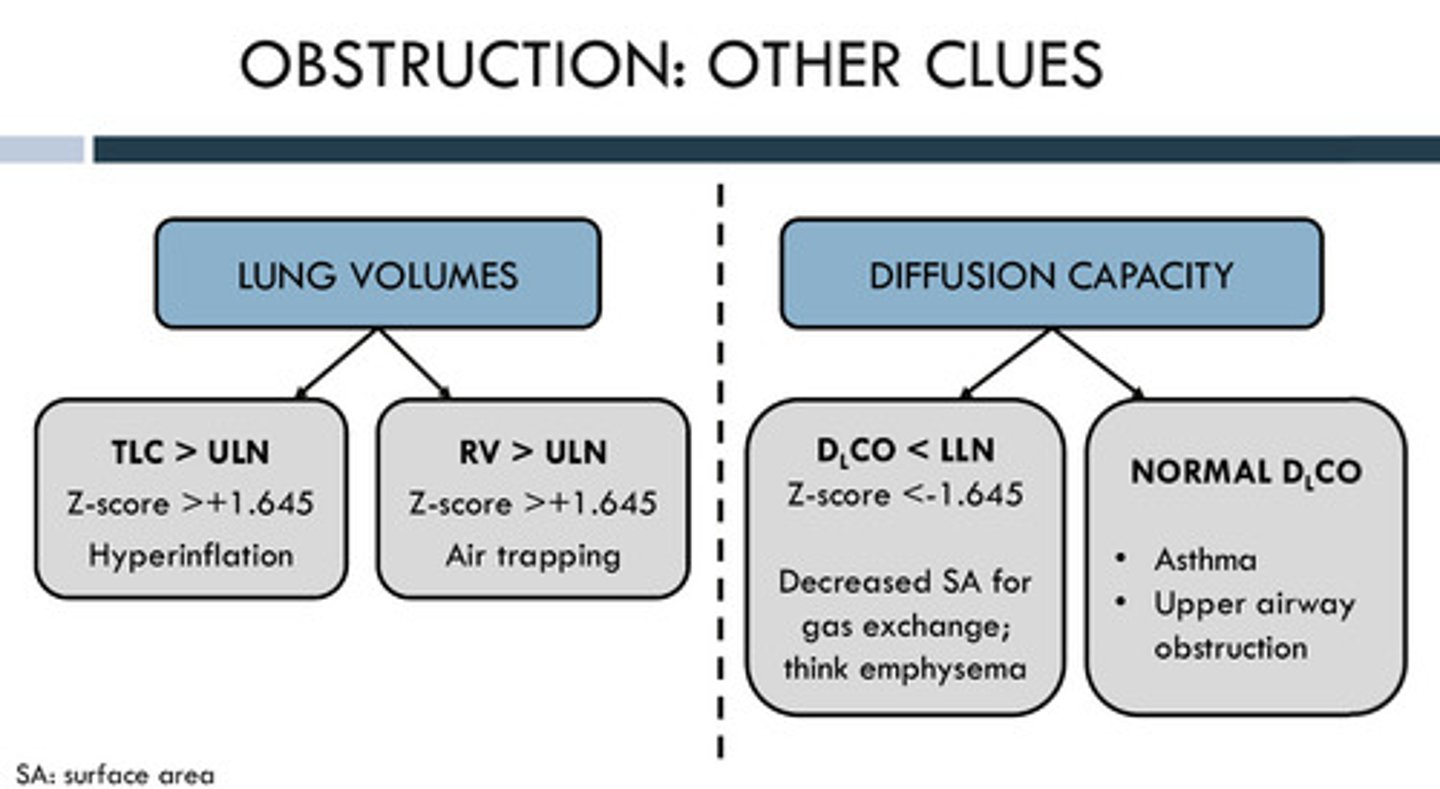
how would the spirogram of someone with hyperinflation and air trapping look if you plotted it on the same chart as a normal spirogram?
on a spirogram, you will see a slower rise in volume (takes longer to exhale), lower FEV1 (less air out in the first second), lower FEV1/FVC ratio, a scooped or curved shape rather than a sharp linear rise, and the plateau may take >10 seconds to reach (or may never fully flatten due to trapped air)
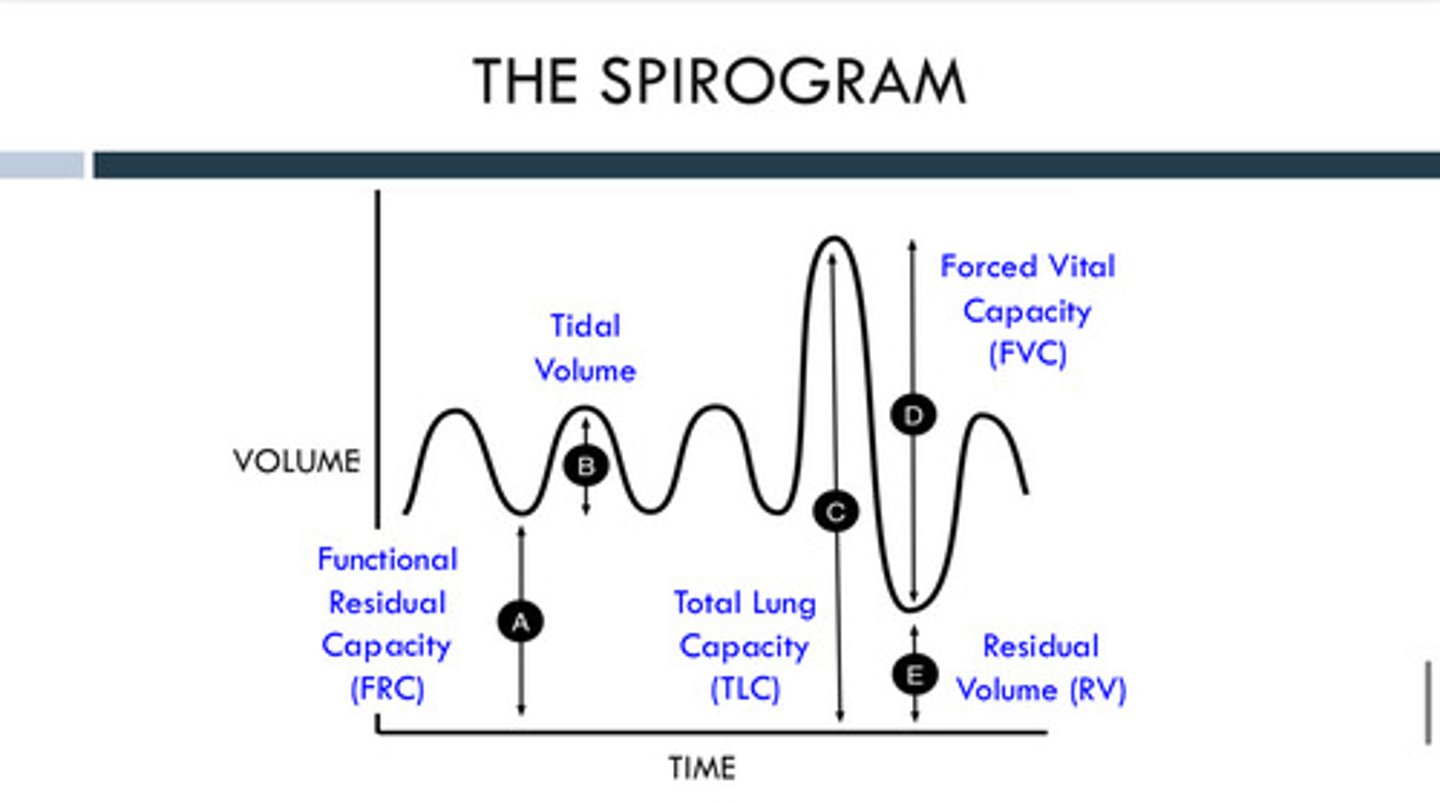
why does emphysema have a low diffusion capacity?
diffusion capacity indicates the surface area available for gas exchange, but it does not tell us how well diffusion works. emphysema results in chronic damage of alveoli, so there would be a decreased surface area for gas exchange. therefore, DCO (diffusion capacity) < LLN; DCO z-score less than -1.645
